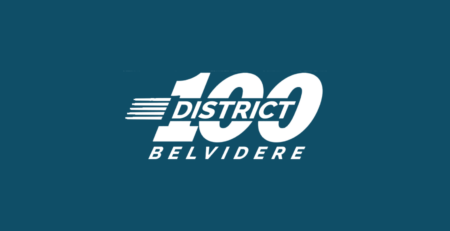Kindergarten and 1st grade are unique in a time of remote instruction. Why? Part of the goal of early school years is to help kids love and understand school, love learning, and make friends. Kindergarten remote instruction doesn’t necessarily make any of those easy – or even possible.
Remote learning is hard for everyone, but especially kindergarten students and parents who don’t have all the skills yet to be independent, tech-savvy, flexible online learners. We’ve had a lot of parents provide feedback about how difficult learning via screens is with their kindergartener. Here are a few tips for successful virtual kindergarten classrooms.
Use Both Recorded Videos and Live Videos for Kindergarten Remote Instruction
Live synchronous learning is beneficial to students for many reasons, but it can be hard for kindergarteners in particular. Building connections virtually can be difficult for young children, which is one of the big benefits to live virtual classes–so it’s important to have live lessons with kindergarteners. However, make sure to also use asynchronous recorded videos for your students so they can pause, rewind, and watch at a time where they are less distracted or have parent assistance. Grabbing a good book and doing a recorded read aloud every day for kindergarten remote instruction is a great way to keep them learning and increase their ability to stay focused.
Use QR Codes (Clever Badges)
Logging into multiple learning platforms during the day, needing to remember passwords and website links, and navigating through the websites once you’re logged in is hard for high school students. So how can kindergarteners manage that? Successful Kindergarten teachers have set up Clever Badges that allow young children to immediately access all of the necessary apps and websites for online learning without help. They can just scan the QR code over their computer and the homepage with everything they need for their schedule during the day appears. This simple strategy helps both students, parents, and teachers keep everything organized and in a streamlined location for kindergarten remote instruction. Using Clever Badges also takes away passwords and bookmarking links so there is basically nothing for the kindergarteners to do besides wave a QR code over the computer camera.
Start with Shorter Live Class Times
Some districts that have seen success in kindergarten by starting remote instruction with short 15-20 minute live classes. After a while, they add on time to the class as students get used to the format and understand what to expect. This incremental increase in the amount of time in class helps students build stamina and not lose focus as they transition to schooling at home. As time goes on, the live classes can add on 5 minutes gradually so students will be more mentally prepared for learning online.
Work with Parents
Set Student Expectations:
Kindergarten teachers can work with parents to set up students for success virtually. Teachers can work with parents to set expectations of what kindergarteners are capable of. Many parents would be surprised to walk into a typical kindergarten classroom and to see all of the things their child can do independently when there are high expectations set for their independence. Work with parents to let them know what they can expect their kindergartener to do independently and what may need to be done with some adult support.
Support Parent Scaffolding:
Let parents know how to scaffold support with their child. This could look like teaching them the “I do, we do, you do” cycle and explain that parents can teach a task like teachers teach: “I do it first, so you can watch me. Then we do it together, and I help you. Then you do it by yourself.” This is how parents can scaffold a task into student independence for kindergarten remote instruction.
For example, if parents want them to be able to log-into a Zoom meeting independently, parents can teach that task with three steps. First, parents would do it solo and talk through each step that they’re taking. Then they would do it with their child–but asking guiding questions along the way: “What do we do first? Do you remember what comes next?” to be there for extra support. Then the third time, see if the child can do it without the parent’s help!
Teachers can work with parents to teach kindergarteners these tactical virtual learning skills. Be clear that teaching more tactical things like logging into a technology platform is still learning. Patience and repetition is important. Sometimes parents hard to refrain from taking over and controlling the task; remind them to let kids make some mistakes for the sake of learning.
Ask for Parent Feedback
Parents are the link for teachers to find out what is going well with at-home learning and what isn’t working. When it comes to kindergarten remote instruction, parent feedback is key to virtual learning success. Teachers can send out surveys for feedback or use a tool like Possip to get consistent parent feedback easily. Possip empowers schools and districts to quickly and routinely hear from their community of families and staff via text-message Pulse Checks™ in over 100 languages. Parent feedback has always been crucial to school success, but it’s the most important thing to gather during at-home learning.
Reach out to hello@possip.com if you’re interested in learning more about Possip!





